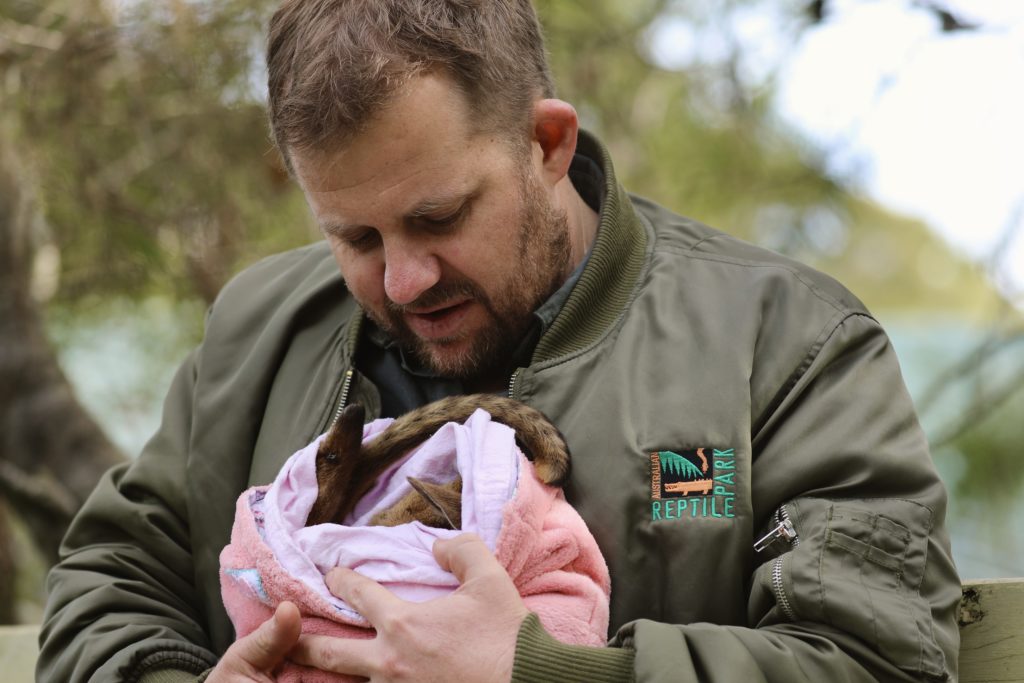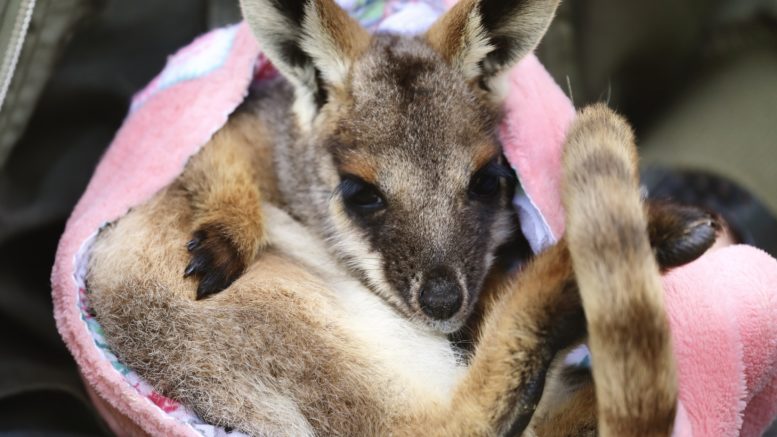The Australian Reptile Park has come to the rescue of a yellow-footed rock-wallaby joey which weighs just under a kilo and was rejected by her mother.
And staff are calling for help in naming the cute marsupial.
Operations Manager, Billy Collett, took on the task of surrogate “mum”, feeding the joey specially formulated milk every five hours, which includes a 2am feed each night.
He also keeps the joey feeling safe in a knitted pouch mimicking her mother’s pouch.
Collett has a little experience as a parent, being the father of a nine-month-old baby who is the same age as the joey.
The joey’s mother is older and the older a rock-wallaby is, the more like she is to reject the joey.
Although tiny, the joey has relished in her second chance at life and is blossoming.
“This joey already has so much personality, I love her to bits,” Collett said.
“It’s the most rewarding thing in the world to nurse a joey and watch it become independent, happy and healthy.
“It has been a bit of a struggle juggling both a marsupial joey and my own baby and I have to ensure I get each of their feeding schedules right and don’t mix up the bottles.
“But all the sleepless nights are worth it and I can’t wait to see her grow into a healthy and strong adult yellow-footed rock-wallaby for our guests to see.”

Park Director, Liz Gabriel, said keepers were quick to see something was off with the mother wallaby and rescue the joey.
“We’re very lucky to have some of the best zookeepers in the business here,” she said.
“Australia sadly has the worst mammal extinction rate on the planet, so the joeys are especially important in preserving this incredible species.”
The orphaned joey is a part of the Australian Reptile Park’s vital conservation breeding project to help save the threatened species.
Yellow-footed rock-wallabies were once found throughout NSW, Queensland and South Australia.
However, they have now disappeared from NSW and Queensland with their number in the wild estimated at being as little as 5,000.
Their decline is attributed to intense hunting in the 1800s and early 1900s for their pelts and in recent times, the introduction of feral pests such at the fox and cat.
Primary source: Media release, Jul 13, 2022, Australian Reptile Park



